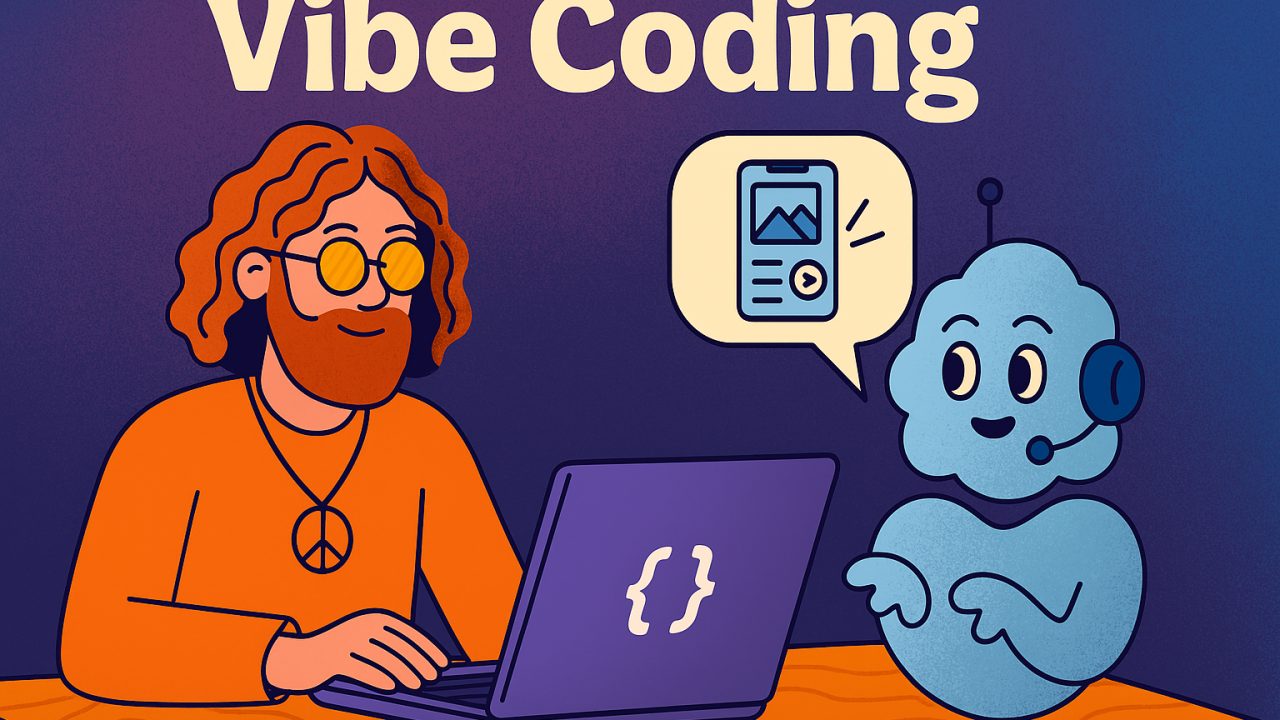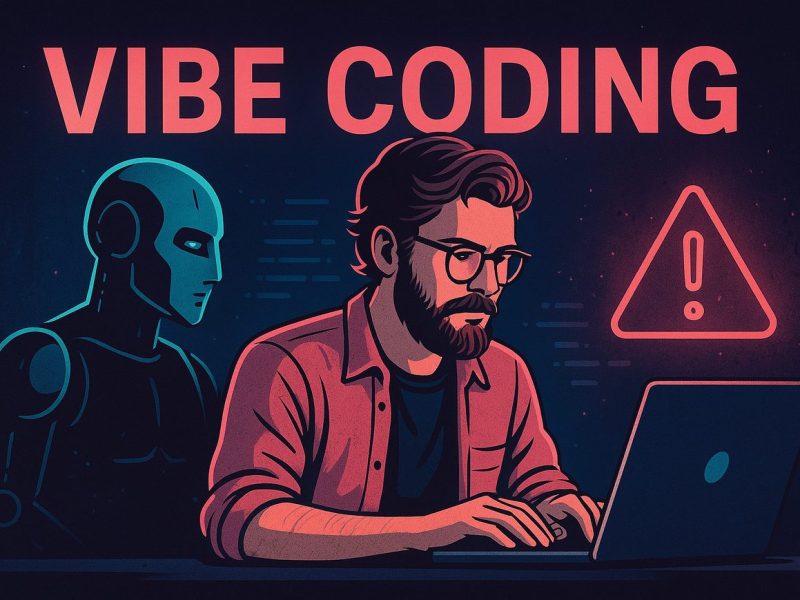How Vibe Coding is Rewriting the Rules of Software Development
Introduction: The Paradigm Shift
When OpenAI’s Andrej Karpathy declared in early 2025 that “the hottest new programming language is English,” he captured the essence of vibe coding—a seismic shift from syntax-centric development to intention-driven creation.
As a veteran in UX and systems architecture, I’ve witnessed no transformation as radical as this. Vibe coding leverages AI to translate natural language prompts into functional code, collapsing development cycles by up to 55% and enabling 25% of Y Combinator startups to build AI-first codebases. But this is just the beginning.
1: The DNA of Vibe Coding
Core Mechanics
Vibe coding operates on a conversational feedback loop:
Prompt: Describe requirements in natural language (e.g., *“Build a dashboard tracking real-time machine temperatures with 80°C alerts”*).
Generation: AI tools like GitHub Copilot or Replit transform prompts into executable code.
Refinement: Humans review, debug, and iteratively refine outputs 1911.
Table: Traditional vs. Vibe Coding Workflows
| Aspect | Traditional Coding | Vibe Coding |
|---|---|---|
| Interaction | Manual typing | Conversational prompts |
| Prototyping | Weeks | Hours/days 1 |
| Accessibility | Steep learning curve | Low barrier for non-coders |
| Focus | Syntax perfection | Problem-solving & architecture |
Technical Enablers
Large Language Models (LLMs): GPT-4, Claude 3, and IBM’s Granite models interpret intent and generate context-aware code.
Agentic AI: Autonomous agents handle multi-step tasks like testing or deployment (e.g., IBM watsonx Code Assistant).
Memory-Augmented Systems: Tools like Cursor IDE retain project context across sessions, enabling episodic memory for long-term refinement.
2: The Near Future – Three Game-Changing Trends
1. VibeOps: AI-Driven DevOps
Automating deployment, monitoring, and maintenance:
Self-Healing Systems: AI agents detect anomalies (e.g., memory leaks) and auto-patch code without human intervention.
Predictive Scaling: Infrastructure adjusts resources based on usage forecasts derived from historical data patterns.
Tools: GitHub Copilot X (for CI/CD automation) and AWS CodeWhisperer (infrastructure-as-code generation).
Case Study: A manufacturing firm reduced downtime by 40% using vibe-coded predictive maintenance agents that auto-generated Python scripts from prompts like “Analyze sensor data for failure patterns”.
2. Voice/Visual Interfaces
Beyond text prompts:
Sketch-to-Code: Draw UI wireframes on a tablet → AI (e.g., *Figma+GPT-4o*) generates React components with Tailwind CSS.
Voice-Driven Development: “Create a login form with OAuth and dark mode” triggers full feature implementation.
Tools:
Google’s Vertex AI Agents: Convert sketches + voice commands into responsive UIs.
Markovate’s AI Design Assistant: Generates compliant WCAG 2.1 interfaces from scribbles.
Table: AI-UI Design Tool Growth
| Year | Market Size (USD) | CAGR | Key Driver |
|---|---|---|---|
| 2023 | $4.3 billion | – | Prototyping automation |
| 2030 | $13.1 billion | 17.3% | Voice/visual integration 10 |
3. Hybrid Workflows
Human + AI symbiosis for enterprise resilience:
Orchestration Architectures:
Conductor Model: One AI agent oversees specialized sub-agents (e.g., security, testing).
Swarm Model: Multiple AI agents collaborate horizontally (e.g., supply-chain optimization).
Compliance Safeguards: In regulated sectors (e.g., healthcare), humans validate AI outputs against FDA 21 CFR Part 11 before deployment.
Tools: IBM watsonx Orchestrate coordinates AI/human tasks, while SAP’s Joule ensures audit trails.
3: Navigating Challenges
Technical Debt & Security
Vulnerabilities: Stanford studies found 14% of AI-generated code contained exploitable flaws (e.g., SQL injection).
Mitigation:
Static Analysis Integration: Tools like Snyk scan AI outputs pre-commit.
Prompt Hardening: “Generate Python dashboard code with input sanitization”.
Architectural Integrity
AI struggles with distributed microservices or stateful systems. Solution: Human architects define boundaries; AI implements modules.
Ethical Guardrails
Bias Amplification: Training data imbalances can propagate inequities.
Countermeasures:
NIST AI RMF framework adoption.
Diverse Training Corpora: Curate codebases beyond GitHub’s top 10% projects.
4: Skills Evolution – From Coders to Conductors
By 2030, developer roles will prioritize:
Prompt Engineering: Crafting context-rich directives (e.g., “Optimize this Kubernetes cluster for cost: performance, not just uptime”).
AI Whispering: Diagnosing LLM “hallucinations” via iterative feedback.
Ethical Auditing: Ensuring AI outputs align with legal/ethical standards.
Real-World Impact: Visa engineers now spend 70% less time on boilerplate code, focusing instead on prompt design and compliance checks.
5: Strategic Adoption Framework
1: Prototyping
Tools: Replit (for rapid MVP generation) + TensorFlow.js (browser-based ML).
Prompt Template:
"Build a [language] function that [goal]. Requirements: 1. [Constraint 1] 2. [Constraint 2] Include: - Error handling for [case] - [Framework] integration" :cite[10]
2: Production Scaling
Stack: React + Vercel AI SDK (dynamic UIs), Google’s Vertex AI Agents (background workflows).
Governance:
AI Oversight Leads: Human role validating security.
Multi-Agent Review: Separate AI agents cross-examine critical code.
3: Continuous Evolution
Self-Refining Systems: Agents use reinforcement learning to optimize outputs (e.g., reducing latency by 15% per iteration).
Conclusion: The Harmonized Future of Vibe Coding
Vibe coding isn’t about replacing developers—it’s about elevating creativity. As Karpathy noted, we’re moving from “character-by-character typing” to “seeing stuff, saying stuff, running stuff”.
The future belongs to teams that wield AI as a co-pilot: voice interfaces accelerating ideation, VibeOps hardening infrastructure, and hybrid workflows merging human ingenuity with machine efficiency.
Final Insight: In 2027, writing raw code will feel like manually assembling engines after the invention of the automobile. The vibes are your blueprint.
Further Reading:


